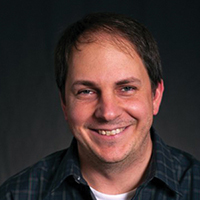Andrew W. Steiner Elected APS Fellow
October 19, 2022
When a giant star dies, Andrew W. Steiner gets a little more lab space.
An associate professor with a joint appointment at Oak Ridge National Laboratory, Steiner studies the neutron stars left after massive stars collapse. His outstanding research has earned him election as a Fellow of the American Physical Society (APS), making him the 10th APS Fellow on the current physics faculty.

Andrew W. Steiner
APS Fellowship recognizes members who have made advances in physics through original research and publication or significant innovative contributions in applying physics to science and technology. They may also have made significant contributions to physics teaching or service. Steiner was cited "for pioneering a data-driven approach to constraining neutron star properties and the dense matter equation of state that combines advanced statistical methods, state-of-the-art nuclear theory, experimental constraints on bulk nuclear properties, and astrophysical data."
Dense, with a mass much larger than that of our sun, an average neutron star could fit in the space between the Tennessee Theatre and McGhee Tyson Airport. Yet these stellar bodies are actually good models for atoms. Steiner uses neutron star observations as a kind of laboratory to learn more about how neutrons and protons interact, especially in terms of the strong force (one of nature’s four basic forces) that holds them together. He was a bit surprised the citation mentioned "advanced statistical methods,” because he’s never actually had any courses in statistics.
"It is, in part, a testament to how much our field has changed over the past decade or so," he said. "Statistical methods, computational tools, and machine learning continue to transform our ability to use data to elucidate our knowledge of the strong nuclear force."
Steiner’s work has ties to important progress in nuclear astrophysics. The team that first detected gravitational waves produced by colliding neutron stars cited his group’s predictions about tidal deformability (what he calls “squishiness”) in these massive objects. He’s also director of the Nuclear Physics from Multi-Messenger Mergers (NP3M) research hub. The National Science Foundation (NSF) awarded UT $3.25 million to launch this national effort, bringing together scientists with expertise in nuclear physics and astrophysical simulations to study the properties of matter not available on Earth. Among the hub’s goals is training a diverse new generation of scientists.
"Professor Steiner works at the forefront of theoretical nuclear astrophysics where he uses cutting edge computational tools to probe the properties of hot and dense strongly interacting matter," said Physics Professor and Department Head Adrian Del Maestro. "His dedication to building open source tools ensures that his research has a broad impact on the field as recognized by his peers through election as a Fellow of the APS. We are proud to add him to the list of 10 APS Fellows forging new knowledge and teaching and mentoring students in the Department of Physics and Astronomy at the University of Tennessee."
Steiner earned a bachelor’s degree in physics at Carnegie Mellon University, followed by master’s and doctoral degrees in physics at the State University of New York at Stony Brook. He joined the UT Physics faculty in 2014. In 2016 he won an NSF Faculty Early Career Development Program (CAREER) Award, following that up in 2019 with a Senior Career Award for Research and Creative Achievement from the College of Arts and Sciences.
Steiner credits a long list of supporters for his career success: his wife, his daughter, his parents, and colleagues from UT Physics and around the country (including Madappa Prakash, his graduate advisor).
Each year, no more than one half of one percent of the society’s membership (excluding student members) is recognized by their peers for election to the status of Fellow. Steiner was recommended for Fellowship by his colleagues in the APS Division of Nuclear Physics. He will be acknowledged at the Division’s annual meeting later this month.